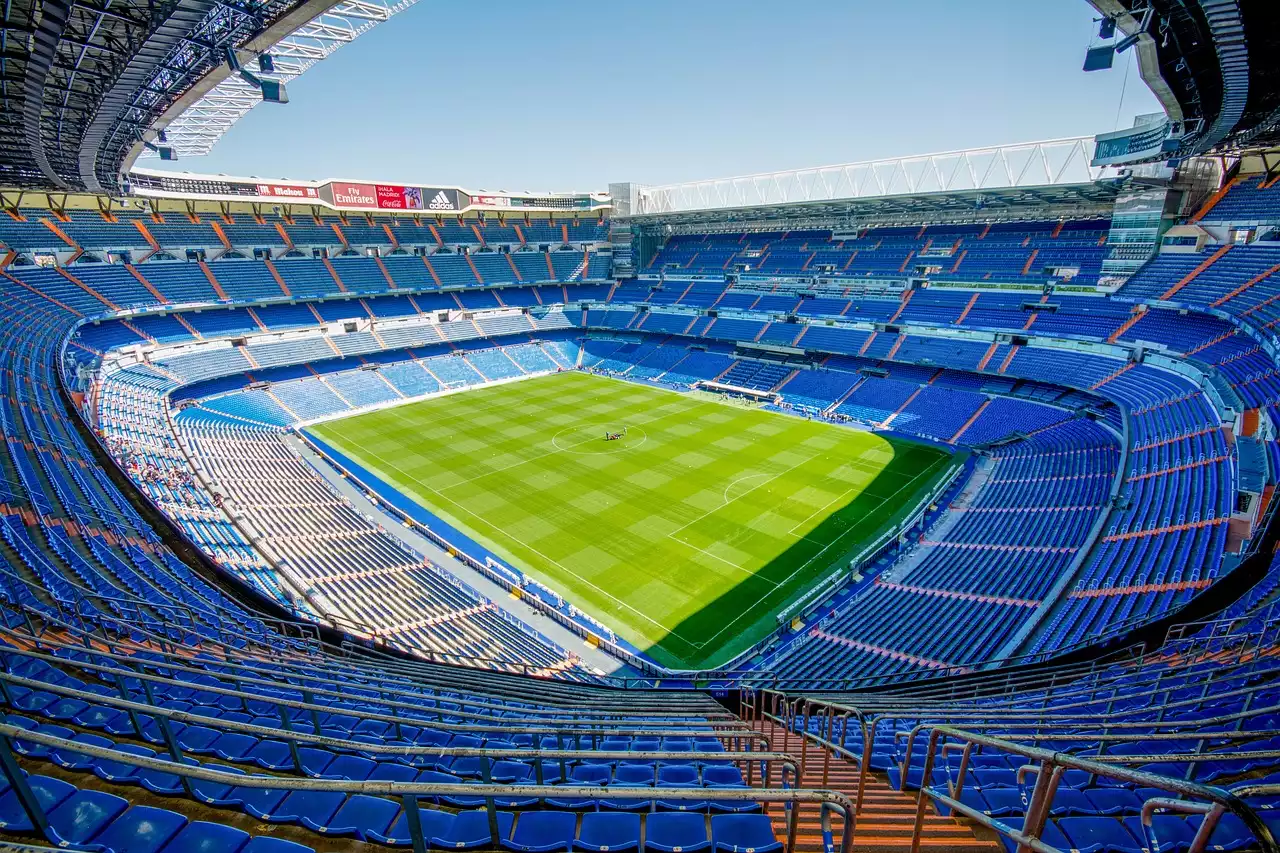Introduction
Welcome to the ultimate guide that will settle the age-old debate in the world of football - which league reigns supreme? In this comprehensive article, we will dive into the top 30 leagues in world football and analyze their key attributes, strengths, and weaknesses to determine the ultimate champion.
From the historic and prestigious English Premier League to the glamour and star power of La Liga, and the tactical brilliance of Serie A, we will leave no stone unturned in our quest to rank the leagues. We will examine various aspects like the caliber of players, competitiveness, fanbase, and financial muscle to provide a holistic perspective.
Our expert analysis and data-driven approach will equip you with the knowledge you need to make an informed judgment on the matter. Whether you're a die-hard football fan, a data enthusiast, or simply curious to find out which league is on top, this guide is your go-to resource.
So, fasten your seatbelts and get ready for a thrilling journey through the best of world football as we unveil the secrets behind the supremacy of the top 30 leagues in the beautiful game.
Factors to consider when ranking football leagues
When it comes to ranking football leagues, several factors come into play. It's not just about the number of goals scored or the overall quality of play. To truly determine the supremacy of a league, one must consider a range of aspects that contribute to its overall strength and appeal.
Firstly, the caliber of players is a crucial factor. Are the world's top talents drawn to the league? Does it attract established stars as well as emerging talents? The presence of high-profile players can significantly elevate a league's reputation and global appeal.
Secondly, competitiveness plays a vital role in determining a league's ranking. Is the title race closely contested, or does one team dominate year after year? A highly competitive league, where any team can emerge victorious, is often seen as more exciting and engaging for fans.
Lastly, the size and passion of the fanbase are critical elements. Are the stadiums packed with enthusiastic supporters? Do the fans create an electrifying atmosphere that adds to the spectacle of the game? A league with a passionate and dedicated fanbase can create an unmatched ambiance that enhances the overall experience.
Considering these factors, let's delve into the top 30 leagues in world football and assess their standings.
Historical dominance of top football leagues
When discussing the supremacy of football leagues, it's impossible to ignore the historical dominance of certain leagues. Over the years, some leagues have consistently produced exceptional teams and players, solidifying their status as powerhouses in the football world.
The English Premier League, for example, has witnessed its fair share of dominant teams, such as Manchester United, Arsenal, and Chelsea. These clubs have achieved tremendous success both domestically and internationally, contributing to the league's reputation as one of the best.
Similarly, La Liga has been home to footballing giants like Barcelona and Real Madrid, who have not only dominated Spanish football but have also conquered the European stage. The technical brilliance and attacking prowess displayed by these clubs have set the benchmark for excellence.
In Italy, Serie A has a rich history of producing legendary teams and players. AC Milan, Inter Milan, and Juventus have all enjoyed periods of dominance, showcasing their tactical prowess and defensive solidity. The league's emphasis on strategy and discipline has made it a breeding ground for world-class defenders and midfielders.
These leagues' historical dominance has played a significant role in establishing their reputation and attracting top talents from around the world. However, the landscape of football is ever-evolving, and new contenders are emerging to challenge the established order.
Key metrics used to rank football leagues
To rank the top 30 football leagues in the world, it is essential to rely on key metrics that provide a comprehensive evaluation. While subjective opinions may vary, data-driven analysis helps eliminate biases and provides a more objective assessment.
One crucial metric is the UEFA coefficient, which ranks leagues based on their clubs' performances in European competitions over a five-year period. This metric takes into account the number of wins, draws, and losses, as well as the stages reached in tournaments like the UEFA Champions League and the UEFA Europa League.
Another metric is the FIFA World Ranking, which considers national team performances to assess the strength of a league. The success of national teams in major tournaments reflects the quality and competitiveness of the league they represent.
Financial muscle is also an influential factor. The revenue generated by a league, through broadcasting rights, merchandise sales, and sponsorship deals, can indicate its global reach and overall appeal. A league with substantial financial resources is often better equipped to attract top players and invest in state-of-the-art infrastructure.
By analyzing these key metrics and considering additional factors like average attendance, TV viewership, and social media following, we can paint a comprehensive picture of the top 30 football leagues and their relative strengths.
The top 10 football leagues in the world
Now, let's delve into the top 10 football leagues in the world. These leagues have consistently proven their worth on the global stage, attracting top players and captivating fans with their thrilling matches and intense rivalries.
1. English Premier League (EPL): Known for its competitiveness and financial muscle, the EPL is often considered the pinnacle of club football. With iconic teams like Manchester United, Liverpool, and Arsenal, the league attracts millions of viewers worldwide.
2. La Liga: Boasting the likes of Barcelona and Real Madrid, La Liga combines technical brilliance with breathtaking skill. The intense rivalry between these Spanish giants, known as "El Clásico," is a spectacle that attracts football enthusiasts from all corners of the globe.
3. Bundesliga: The German league is renowned for its passionate fans and vibrant stadiums. Clubs like Bayern Munich and Borussia Dortmund have consistently performed well in European competitions, elevating the league's status.
4. Serie A: Known for its tactical brilliance and defensive solidity, Serie A has produced legendary players like Paolo Maldini and Francesco Totti. Teams like Juventus, AC Milan, and Inter Milan have enjoyed success both domestically and internationally.
5. Ligue 1: With Paris Saint-Germain leading the way, Ligue 1 has witnessed a resurgence in recent years. The league's ability to attract top talents from around the world has raised its profile and competitiveness.
6. Primeira Liga: Portugal's top league has gained recognition for its tactical acumen and the development of young talents. Clubs like Benfica and Porto have enjoyed success in European competitions, showcasing the league's quality.
7. Eredivisie: The Dutch league is known for its attacking style of play and the nurturing of young talents. Ajax, in particular, has a rich history of producing exceptional players and playing attractive football.
8. Russian Premier League: The Russian league has seen significant investment in recent years, resulting in the growth of clubs like Zenit St. Petersburg. The league's rise in quality has made it a contender among the top European leagues.
9. Brasileirão: Brazil's top league is renowned for its flair and skillful players. The league has a rich history of producing world-class talents, and clubs like Flamengo and Santos have enjoyed success on the international stage.
10. Superliga Argentina: Known for its passionate fans and intense rivalries, the Argentine league boasts clubs like Boca Juniors and River Plate. The league's competitiveness and vibrant atmosphere make it a significant force in South American football.
Premier League - Multiplex Premier League
Analysis of the top 10 football leagues
Now that we've identified the top 10 football leagues, let's analyze their strengths and weaknesses to gain a deeper understanding of their ranking.
The English Premier League stands out for its financial muscle and global appeal, attracting top players from all over the world. However, critics argue that its competitiveness has suffered due to the dominance of a few elite clubs.
La Liga, on the other hand, is hailed for its technical brilliance and star power. The rivalry between Barcelona and Real Madrid adds to the league's allure, but concerns have been raised about the lack of competitiveness beyond the top two clubs.
The Bundesliga is known for its passionate fans and affordable ticket prices, creating an electric atmosphere in its stadiums. However, the league has been criticized for lacking financial parity, with Bayern Munich consistently dominating the competition.
Serie A's tactical brilliance and defensive prowess are highly regarded, but the league has faced challenges in recent years due to a decline in its global appeal. Efforts are being made to revitalize Serie A and attract a new generation of fans.
Ligue 1 has seen a surge in prominence with the rise of Paris Saint-Germain, but critics argue that the league lacks competitiveness outside of the top clubs. The league's ability to retain top talents and nurture local talents will be crucial for its long-term success.
Primeira Liga has established itself as a breeding ground for young talents, with clubs like Benfica and Porto consistently producing exceptional players. However, the league faces challenges in retaining these talents, as they are often snapped up by bigger European clubs.
The Eredivisie's attacking style of play and focus on youth development have earned it recognition. However, the league's financial limitations and the subsequent departure of top talents pose challenges to its sustainability.
The Russian Premier League's significant investment has resulted in the growth of clubs like Zenit St. Petersburg. The league's rise in quality is promising, but it still has a long way to go to establish itself among the European elites.
Brasileirão's flair and skillful players have made it a hotbed for talent, but financial constraints and the subsequent loss of top talents to European clubs hinder its progress. The league's ability to retain talent and improve its infrastructure will be crucial for its future success.
The Superliga Argentina's passionate fans and intense rivalries create an unmatched atmosphere. However, financial instability and the subsequent loss of top talents remain significant challenges for the league.
Controversies and debates surrounding football league rankings
As with any ranking system, controversies and debates surround the determination of the top football leagues in the world. Different metrics and subjective opinions often lead to disagreements among fans, experts, and stakeholders.
One common debate revolves around the weightage given to domestic success versus international achievements. Some argue that a league's standing should be solely based on its performance in European competitions, while others believe domestic dominance should carry more weight.
Another contentious issue is the impact of financial resources on a league's ranking. Critics argue that leagues with substantial financial backing can attract top talents, creating a cycle of success. On the other hand, proponents argue that financial stability is a reflection of a league's overall appeal and commercial viability.
The debate between traditional powerhouses and emerging leagues is also a topic of discussion. While the historical dominance of leagues like the EPL and La Liga is undeniable, emerging leagues like the Chinese Super League and the Major League Soccer in the United States are gaining traction with significant investment and the acquisition of high-profile players.
Ultimately, football league rankings are subjective to a certain extent, as personal preferences and biases come into play. However, a data-driven approach and analysis of key metrics can help provide a more objective evaluation.
Emerging football leagues to watch out for
While the top 10 football leagues have long established their supremacy, several emerging leagues are making waves in the football world. These leagues are investing heavily in infrastructure, attracting top talents, and gaining international recognition.
The Chinese Super League has witnessed a surge in popularity and financial muscle in recent years. The league's ability to attract established stars like Oscar and Hulk has raised its profile and signaled its intent to challenge the established order.
The Major League Soccer in the United States has experienced significant growth, both in terms of fanbase and commercial viability. The league's strong emphasis on youth development and the acquisition of marquee players like David Beckham and Zlatan Ibrahimović have propelled its popularity.
The Indian Super League is another league on the rise, capturing the attention of football enthusiasts with its vibrant atmosphere and emerging talents. With investments from prominent business tycoons and the signing of international players, the league aims to establish itself as a major force in Asian football.
The Qatar Stars League is gaining prominence as Qatar prepares to host the 2022 FIFA World Cup. The league's infrastructure and financial backing are being enhanced to attract top talents and create a lasting football legacy in the country.
These emerging leagues present exciting opportunities for growth and the potential to challenge the established order in the future. With strategic planning and sustained investment, they could become significant players on the global football stage.
The impact of ranking on clubs and players
The ranking of football leagues has a significant impact on clubs and players alike. A higher-ranked league often attracts top talents, providing them with the opportunity to showcase their skills on a bigger stage and compete against the best.
For clubs, a higher league ranking translates to increased revenue through broadcasting rights, sponsorship deals, and merchandise sales. It also enhances their ability to attract investors and secure lucrative partnerships. Additionally, clubs in higher-ranked leagues are more likely to participate in prestigious European competitions, further boosting their profile and financial prospects.
For players, joining a higher-ranked league offers the chance to compete at a higher level, challenge themselves against top talents, and potentially catch the attention of national team selectors. It also increases their market value and opens doors to endorsement deals and commercial opportunities.
Conversely, clubs and players in lower-ranked leagues face challenges in attracting top talents, securing commercial partnerships, and generating significant revenue. They often struggle to compete with the financial muscle and global appeal of teams in higher-ranked leagues.
While ranking is not the sole determinant of a club or player's success, it undoubtedly plays a crucial role in shaping their prospects and opportunities in the football world.
The debate continues - which league reigns supreme?
In conclusion, the debate over which league reigns supreme in world football continues to captivate fans, experts, and stakeholders. The top 30 leagues in world football offer a rich tapestry of talent, competitiveness, and passion that make the beautiful game truly global.
While historical dominance, key metrics, and emerging leagues provide a framework for ranking, personal preferences and biases will always influence individual opinions. Ultimately, the supremacy of a league is subjective to a certain extent, and what matters most is the joy and excitement that football brings to fans worldwide.
So, whether you believe the English Premier League's competitiveness makes it the best, or you're enchanted by the technical brilliance of La Liga, one thing is for certain - the world of football offers something for everyone. So, sit back, enjoy the games, and let the debates continue. After all, it's the love for the game that unites us all.











